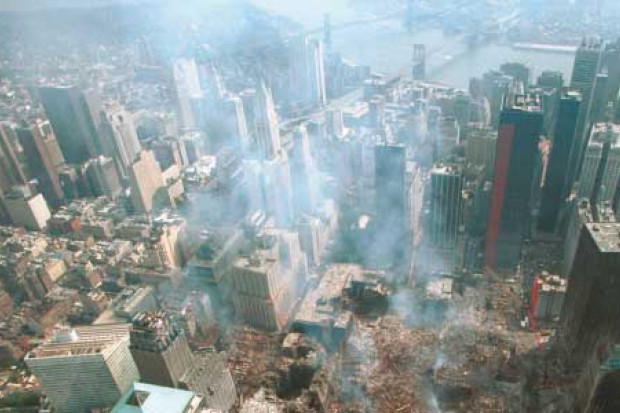Artists Left Stranded by the Drying Up of Myth
In the latter part of his essay ‘The Search for Samhita’ (JMI, November-December) Benjamin Dwyer wonders ‘what the role of the artist might be in a Western contemporary society dominated by technology’. Specifically, he speculates on how the artist – in the first place, I suppose, a musical composer – ‘might provide a positive counter-force’ in these imbalanced circumstances. But that is to suppose that artists might still have a social role, and Dwyer has earlier in his essay expressed his fear to the contrary; his fear that artists, as such, may have been neutralised and rendered socially redundant. Stopping there for a moment in his zigzag course, he had asked with Heidegger the fundamental question: ‘What are poets for?’. But then, after quoting, inconclusively, two or three opinions, he left this fundamental matter in the air.
That, I believe, is where Dwyer’s essay took a false turning, so that it ended up leaving himself and the reader baffled. The central questions he was exploring were surely: ‘What are artists for?’, ‘Can they exercise that role in our age dominated by technology?’ and ‘How, specifically, can they do so?’ Obviously, the second and third of those questions cannot be seriously discussed without answering the first one: ‘What is the role of artists in human society?’
Clarified in this manner, the basic matter at issue is not ‘what role can artists have in the contemporary West?’, but whether in present circumstances they can exercise the role proper to them since human society began. Dwyer was on the right track when he suspected, momentarily, that they cannot – that present circumstances have deprived artists of their social role. He was on the right track because that is in fact the case. But then, the possibility of artists providing a counter-force to overweening technology – or doing anything else of social significance – doesn’t really arise. For they are disempowered, or almost so.
Artists deprived of myth
The essential role of artists is to give pleasure in the service of myth. By a ‘myth’ I mean ‘an explanatory and justifying story which makes those who believe in it – and those who, after them, identify with their belief – feel good.’ The contemporary West has been increasingly rendering artists impotent by increasingly depriving them of myth. A glance backwards confirms their dependence on myth and clarifies what its absence entails. What would remain of European art music without Catholicism, Protestantism, Divine-right Monarchy, The Age of Reason and Sensibility, Romanticism – with its multiple stories, Ancient Greek myth, Europe’s national myths and legends, and – though its explanatory and justifying story was of more limited scope – artistic Modernism, in the broad sense? All these myths, together and singly, served the artists who served them by providing a framework of theme, approval, audience and financing, within which while giving pleasure they could pursue their artistic concerns.
Benjamin Dwyer quotes Ted Hughes as saying that we better have some alternative for when we crawl from beneath the rubble of the churches. The present desert of myth is not only a result of the decline of Christianity in the West; there has also been a drying up of Europe’s secular myths. But it is noticeable – and this is the core of the problem – that the Christian decline has been accompanied by a decreasing ability of the West to produce new myths. I mean proper myths, myths that by being widely believed in achieve operative life, and are thus realised as myths.
A myth develops in three stages from conception to operative life. Conceived in minds, it is equipped from the start with its explanatory and justifying story. Disseminated to the minds of its target believers – those to whom its explanation and justification are directed – it is a growing, embryonic myth. It becomes operative – and thus an actual myth – when, believed in widely, it makes its believers feel good; that is, morally just and contented with self. By the same token, if it fails to produce that feeling of virtuousness and at-oneness, belief in it falters or withers, so as to render it an abortive myth. It is then merely a story which its target believers observe in the knowledge that it refers to them, but which they do not take into their minds and hearts, thus making it an operative myth.
Abortive myths
In Ireland we have a local example of abortive myth in the substitution that has been offered for the myth of self-liberating, Gaelic, Catholic Ireland which animated the revolutionary decades. The substitute story depicts the present Irish generation as virtuous because, having rejected de Valera’s cruel, dark, inward-looking and difference-obsessed Ireland, it has created a bright, kind, open-minded, outward-looking, multicultural Ireland, that is like anywhere else from the Norfolk Broads to the Golden Gate Bridge. That this is an abortive myth is evidenced by the behaviour of growing numbers of its young target believers precisely during the period – the last twenty odd years – when the new story has been disseminated. Apathetic to its explanation of why and how they are a righteous generation, and anything but content with self, they have been notoriously engaging in various forms of self-annihilation.
On a broader scale, consider the would-be Myth of the Western World Since World War II. In the Introduction to his Europe: A History (1996), the English historian Norman Davies sketches it under the title ‘The Allied Scheme of History’. I quote from his sketch:
Thanks to their triumphs in 1918, in 1945, and at the end of the Cold War, the Western Allies have been able to export their interpretation of events worldwide … The priorities and assumptions which derive from Allied attitudes of wartime vintage … may be summarised as follows:
• The belief in a unique, secular brand of Western civilisation in which ‘the Atlantic community’ is presented as the pinnacle of human progress. Anglo-Saxon democracy, the rule of law in the tradition of Magna Carta, and a capitalist, free-market economy are taken to be the highest forms of Good …
• The ideology of ‘anti-fascism’, in which the Second World War is perceived as the ‘War against Fascism’ and as the defining event in the triumph of Good over Evil …
• A demonological fascination with Germany, the twice-defeated enemy. Germany stands condemned as the prime source both of the malignant imperialism which produced the First World War, and of the virulent brand of fascism which provoked the Second …
• An indulgent, romanticised view of the Tsarist empire and the Soviet Union … Russia’s manifest faults should never be classed with those of the enemy. For Russia is steadily converging with the West …
And so on. At the core of what Davies is saying is a fact ascertainable by listening to the West’s rulers and their ideologues and by noting the endlessly repeated war films on the West’s television channels; the fact, namely, that since 1945 westerners are being told, authoritatively, that in World War II Good triumphed definitively over Evil. Among the details which this story explains and justifies is the fact that the five permanent members of the Security Council, equipped with the power of veto on world affairs, are the countries that won – or in the cases of France and China can be construed as having won – that war. Of direct import to all of us is the message that, as westerners, we are not only inheritors of that victorious Good, made up of Democracy and Freedom, but participants in it as voters and free citizens – and therefore ourselves good. Staunchly, we are told, we have defended this Good, and will continue to defend it, against the succession of fascisms and ‘new Hitlers’ which reincarnate and try to resuscitate that Evil which our fathers and grandfathers defeated once for all.
To describe this as an abortive myth is to be kind. Observation tells us that, from San Francisco to Berlin, the general run of westerners, hearing rather than listening to the promulgated story, fail to feel possessed of the moral goodness which it attributes to them or of the contentment with self which it is intended to induce. So rather from taking it into their hearts and minds and believing it, they observe it as they observe the weather. There are of course notable exceptions, such as the young Marines who guard the prisoners at Guantanamo Bay. Interviewed recently on television about how they see their work and the purpose of it, they repeated the Freedom and Democracy, Good and Evil story, word for word and with seeming conviction. But to believe that they believe it, and to retell it when called on, is part of their training, part of their military drill.
The Myth of the Western World Since World War II leaves the undrilled generality of westerners tepid or cold. The notion that they are expected actually to believe it would come to most of them as a surprise! Certainly – to return to the main point I am making – the story’s effect on people is not such as to make them want to commission chorales or symphonies, painted murals or celebratory poems. Nor, if the people happen to be composers, painters or poets, does it set their minds humming with schemes for such works.
But the fact remains that, in the matter of myth-making, the Myth of the Western World Since World War II is the best the contemporary West can do.
Survival in the desert of myth
Faced with the dearth of myth – that is, of operative myth, believed in by people of all sorts – contemporary artists employ various survival tactics. A few still serve the Christian myth, mainly in its Catholic version, finding in its dwindling community of believers the sole survival of the great mythical system that once serviced European art. Other artists serve artistic mini-myths of the Schoenbergian variety – such as Patrick Zuk discussed in the last issue of JMI – or the equivalents of these in ‘installation art’ or ‘postmodernist’ literature. In these cases, the explanatory and justifying story explains that the small number of devotees arises from the scarcity of morally and mentally superior persons amid the philistine throng. And if the work that the artist contributes to the story offends ears, or eyes, or the faculty of reason, the small band’s ability to find pleasure in this offence confirms what the story tells them about how different they are from the throng.
And again, finally, there are artists who survive by creating personal myths and serving these. Some who do this live in the hope that an important critic will decode their myth and become its interpreter to an appreciative public. Others, entirely satisfied by what their private, made-to-measure story tells them, don’t give a damn.
Published on 1 January 2004












